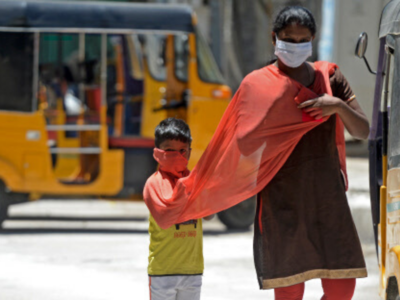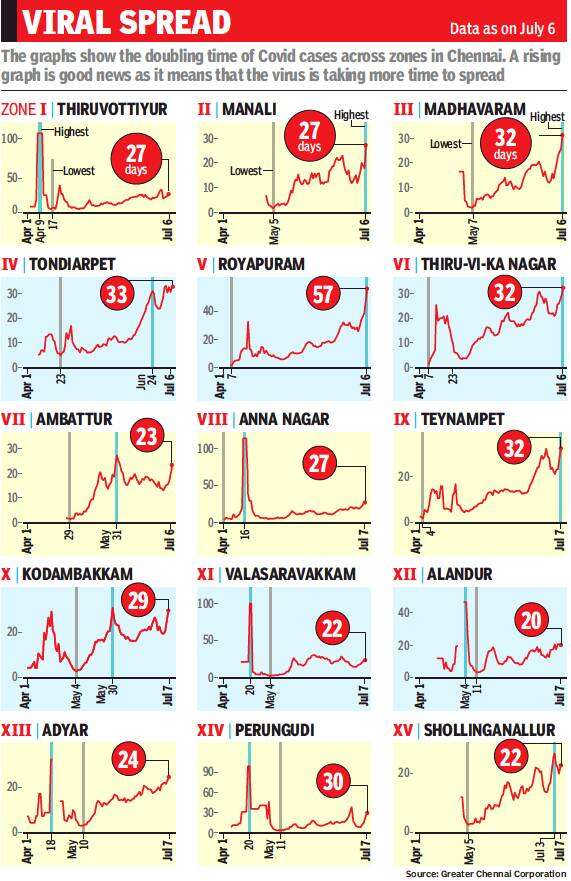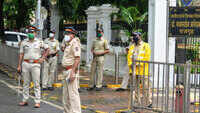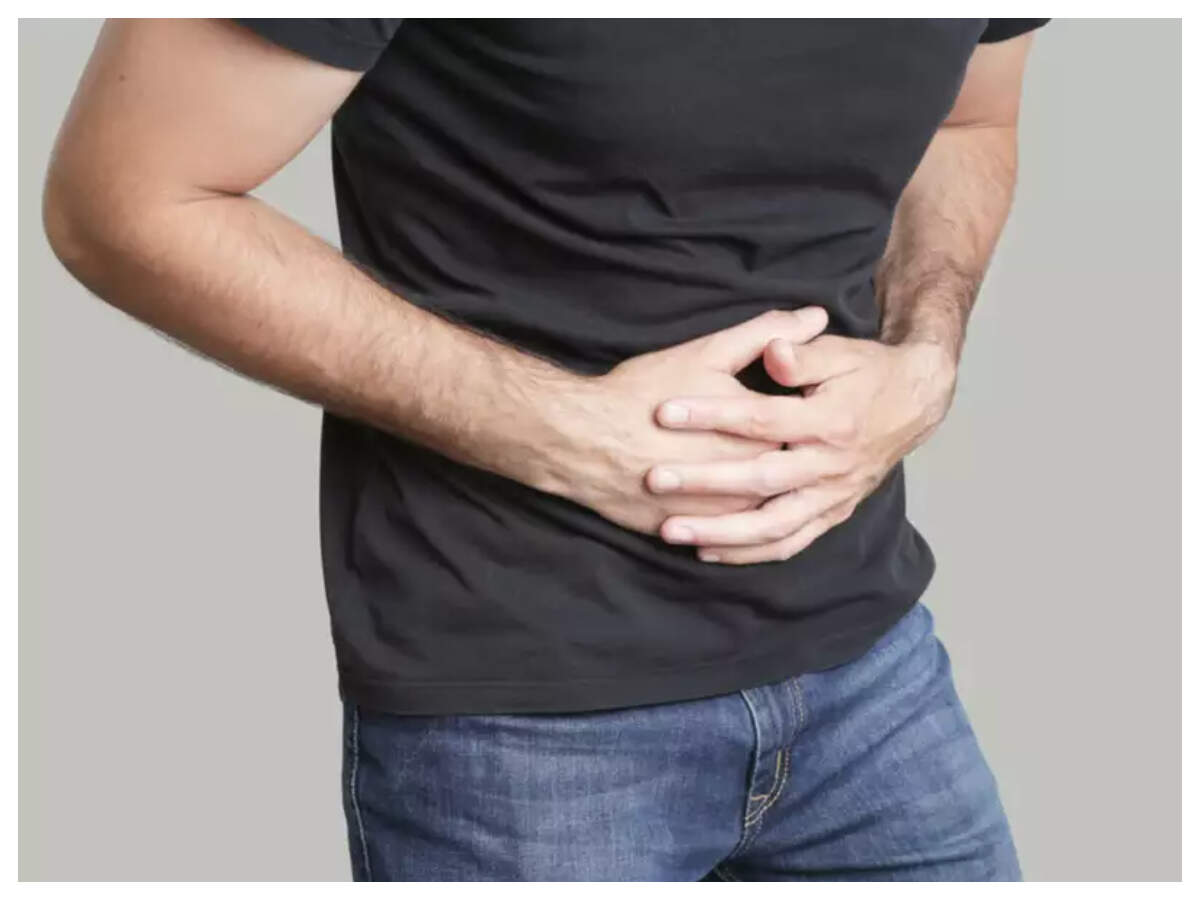
CHENNAI: The doubling time of Covid-19 cases has increased across all 15 zones in the city, bringing cheer. On July 6, it was 25.42 days for the entire city — calculated taking into consideration all reported cases in the last seven days — against 12 days in June, 4.4 days in May and 3 days in April.
Increase in the ‘doubling time’ — time taken for the number of virus cases to double — shows the transmission rate has reduced, said Dr P Ganeshkumar, assistant director & scientist at ICMR-National Institute of Epidemiology. This could be due to various measures undertaken by the city corporation like scaling up testing, conducting camps and imposing lockdowns.

Doubling time in an epidemic depends on how cases are detected, said Dr T Jacob John, former head of Indian Council for Medical Research’s centre for advanced research in virology. “It is supposed to reflect the growth or flattening of an epidemic. It is a useful measure provided the testing is uniform over time. This means the number of tests done was adequate to detect the same proportion of cases over time… If lesser tests are conducted to show lesser numbers, then this will have no impact,” he said.
As per data, hotspots such as Royapuram, Tondiarpet, Thiru Vi Ka Nagar, Kodambakkam, Teynampet, Anna Nagar, Valasaravakkam have shown the best results. In Royapuram, it is now 57.1 days against 20 days in June, 32.7 in Tondiarpet against 12 in June, 32.4 in Thiru Vi Ka Nagar against 18 in June, 32.2 in Teynampet against 16 I June, 24.7 in Anna Nagar over 10 in June and 28.8 in Kodambakkam against 20. “A virus taking more than 14 days to reach the double number of people is a good sign,” said S Rakasekaran, former deputy director of public health.
Corporation joint commissioner (health) P Madhusudhan Reddy said many strategies had been rolled out since May last week. “The first thing we did was collect more samples, detect more ILI cases and set up screening centres. In the past week, we uniformly tested more than 10,000 samples daily. Next, we strengthened door- to-door surveillance and quarantine management.”
He said all steps were taken to ensure no symptomatic person was missed. “In fact, 29% of the 10,500-odd people who attended fever camps from May 8 have tested positive. Extensive contact tracing and community intervention programmes have helped reduce transmission.” he said.
In a meeting at the secretariat on Wednesday, all districts were asked to follow measures taken in over the past one month to reduce transmission rate and test positivity rate.
Increase in the ‘doubling time’ — time taken for the number of virus cases to double — shows the transmission rate has reduced, said Dr P Ganeshkumar, assistant director & scientist at ICMR-National Institute of Epidemiology. This could be due to various measures undertaken by the city corporation like scaling up testing, conducting camps and imposing lockdowns.

Doubling time in an epidemic depends on how cases are detected, said Dr T Jacob John, former head of Indian Council for Medical Research’s centre for advanced research in virology. “It is supposed to reflect the growth or flattening of an epidemic. It is a useful measure provided the testing is uniform over time. This means the number of tests done was adequate to detect the same proportion of cases over time… If lesser tests are conducted to show lesser numbers, then this will have no impact,” he said.
As per data, hotspots such as Royapuram, Tondiarpet, Thiru Vi Ka Nagar, Kodambakkam, Teynampet, Anna Nagar, Valasaravakkam have shown the best results. In Royapuram, it is now 57.1 days against 20 days in June, 32.7 in Tondiarpet against 12 in June, 32.4 in Thiru Vi Ka Nagar against 18 in June, 32.2 in Teynampet against 16 I June, 24.7 in Anna Nagar over 10 in June and 28.8 in Kodambakkam against 20. “A virus taking more than 14 days to reach the double number of people is a good sign,” said S Rakasekaran, former deputy director of public health.
Corporation joint commissioner (health) P Madhusudhan Reddy said many strategies had been rolled out since May last week. “The first thing we did was collect more samples, detect more ILI cases and set up screening centres. In the past week, we uniformly tested more than 10,000 samples daily. Next, we strengthened door- to-door surveillance and quarantine management.”
He said all steps were taken to ensure no symptomatic person was missed. “In fact, 29% of the 10,500-odd people who attended fever camps from May 8 have tested positive. Extensive contact tracing and community intervention programmes have helped reduce transmission.” he said.
In a meeting at the secretariat on Wednesday, all districts were asked to follow measures taken in over the past one month to reduce transmission rate and test positivity rate.

Coronavirus outbreak
Trending Topics
LATEST VIDEOS
More from TOI
Navbharat Times
Featured Today in Travel
Get the app









